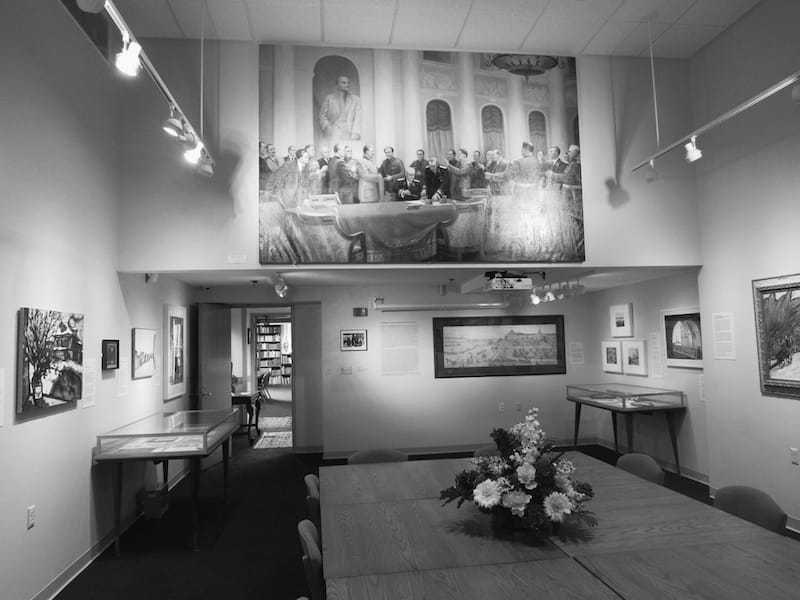Journeys in Space and Memory: Russian Urban Scenes and Landscapes

The Amherst Center for Russian Culture hosted an opening reception for its new exhibition in the Russian Center Art Gallery on Oct. 2. The exhibition, which is located on the second floor of Webster Hall, is called “ПОД ОТКРЫТЫМ НЕБОМ — Journeys in Space and Memory: Urban Scenes and Landscapes by Russian Artists.” The Russian words roughly translate to “Under the Open Sky.” The works were chosen by the Mead Art Museum’s senior curator, Bettina Jungen, and the exhibition features a range of painted works from the Thomas P. Whitney ’37 Collection.
Whitney majored in history at Amherst and went on to receive a master’s degree in Russian history from Columbia University. He is most famous for his translation of Nobel prize-winning author Aleksandr Solzhenitsyn’s written works. He worked in the Soviet Union for most of his adult life, where he came into contact with members of the Russian intelligentsia and collected many of their works that were banned during that time. His collection includes costume designs for plays that never occurred, old Russian icons dating back to the 17th century, avant-garde media projects, censored poetry and prose, illegal diaries and books written by artists while in exile during the 19th and 20th centuries. The collection encompasses a wide range of Russian intellectual movements, from Rayism to Cubism to Suprematism. Whitney donated his whole collection of about 400 objects to Amherst College in 2001, and it is now housed in the Amherst Center for Russian Culture. The large size of the collection allows for a different assortment to be featured every year, with a new theme.
According to Jungen, this year’s theme is “the underlying identity of home and belonging.”
“Most of these paintings are of the homes of the artists,” she said. “They ask the question, how does the artist depict their home? Positively? Negatively? Are they benevolent in their depiction, or critical?” These concepts were prevalent in the 17 distinct works of the exhibition.
The majority of the works are paintings depicting either sunny or wintry Russian landscapes, or gloomy or vibrant Russian cityscapes. The paintings are both real and imagined view and have either traditional or modern genre scenes. “There are many possible connections between the body of works; there is not just one way to bring them all together,” Jungen said. “In addition, each of them is really different. Together, they are a good representation of the different elements of Thomas P. Whitney’s collection.”
During the reception, Miloslava Waldman, the overseer of European prints and the Study Room at the Mead Art Museum, commented on the exhibition’s “personal nature.” Many of the artists painted their own homes and included images from their own lives. “There are so many messages in these works, you can pair them however you would like and learn something different,” she said. Curiously, she noted that about half of the exhibition features works illustrating bright summertime while the other half shows the dark of winter.
Irina Yakub, another scholar who attended the reception, said, “It is a small exhibition. If only it were a larger space, then we could see a larger number of pieces. But what we have here are the gems of [Thomas P. Whitney’s] collection. I want to stand and think about every painting for a long time.”
“ПОДТКРЫТЫМ НЕБОМ — Journeys in Space and Memory: Urban Scenes and Landscapes by Russian Artists” will be on view in the Amherst Center for Russian Culture on the second floor of Webster Hall through spring 2016.





Comments ()